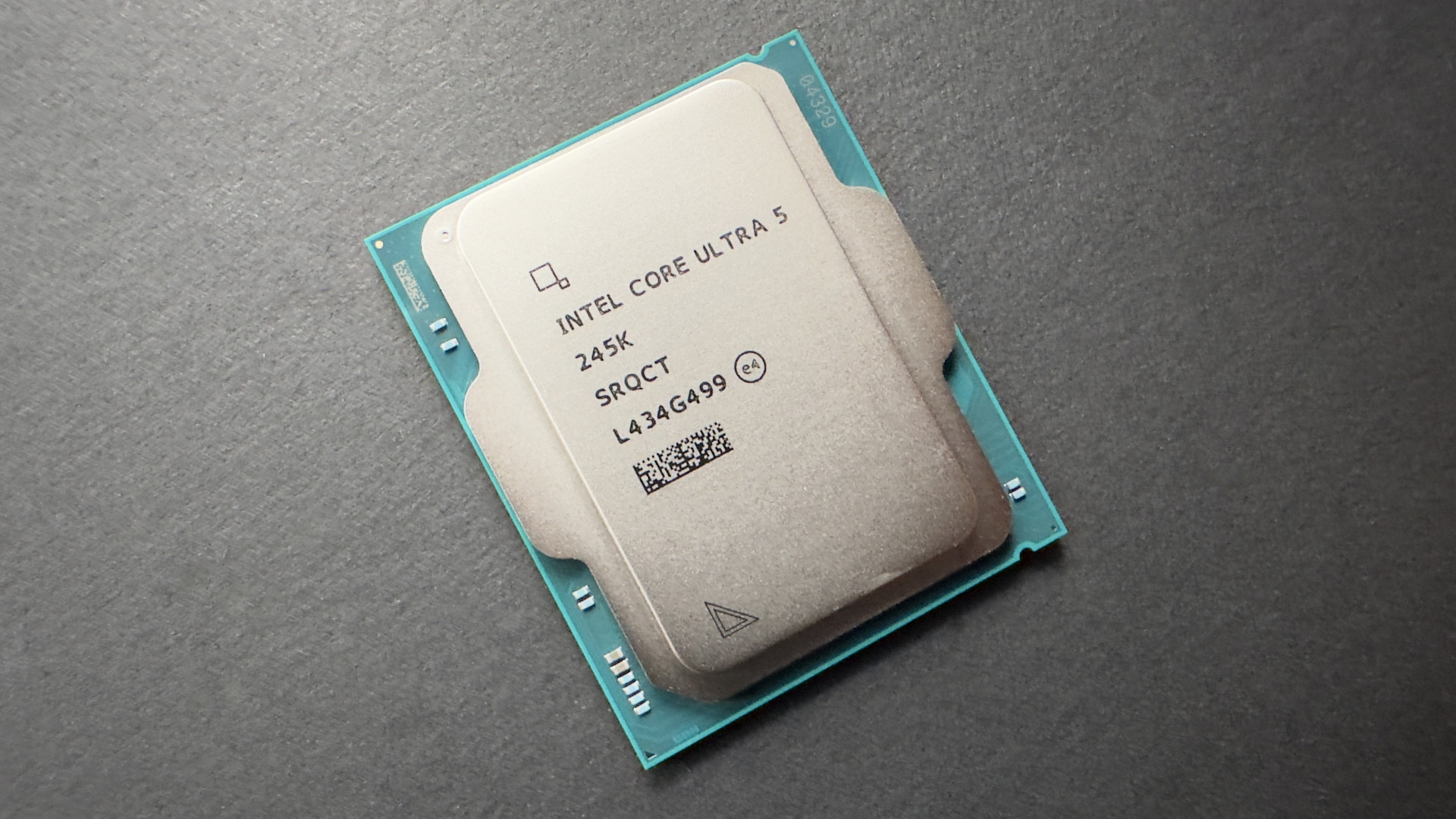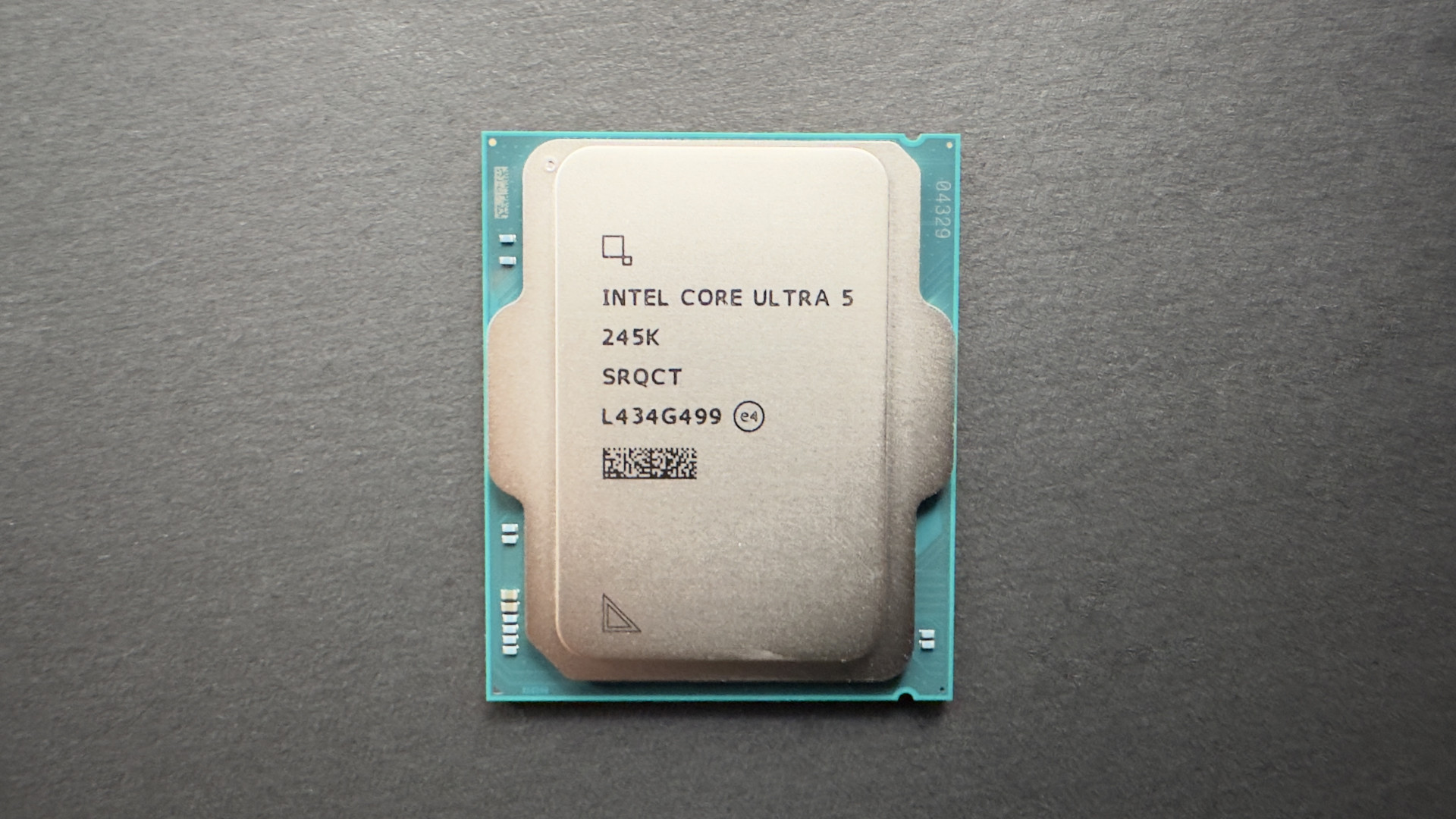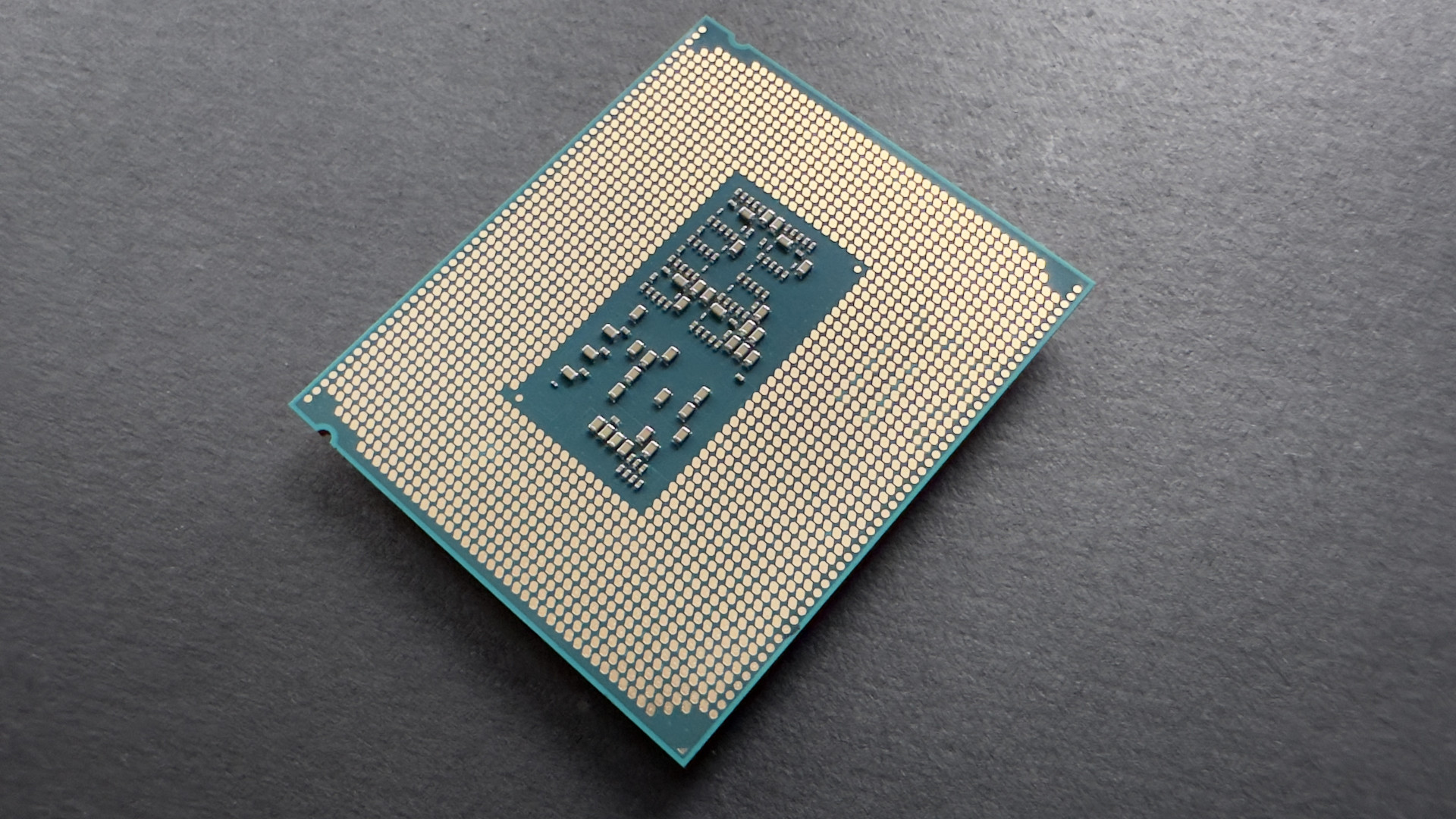
The launch of Arrow Lake marks a new chapter in Intel's history as it's essentially the first desktop processor in its ranks that isn't made by Team Blue itself. The multiple tile design, first introduced with Meteor Lake in the mobile sector, is predominantly manufactured by TSMC—only the base tile and packaging are handled by Intel.
That's not the only change on show here and we've covered the important changes in detail elsewhere. It's suffice to say that the new Core Ultra 200S series of CPUs is a new world for Intel as they are so different to previous desktop designs.
The Core Ultra 5 245K (and the GPU-less 245KF) is currently the baby of the Arrow Lake line-up and it's basically a Core Ultra 9 285K with two P-cores and eight E-cores disabled. The clocks are a little lower too and there's less L3 cache, all of which reduces the maximum power limit to 159 W.
While it's an obvious successor to the Core i5 14600K, the 245K's $309 MSRP puts it closer to the Ryzen 7 9700X than the Ryzen 5 9600X (currently $249 and $327 on Amazon, respectively). Architecturally, though, it's very different to both as AMD's chips are six/eight-core processors, with support for 16 threads, whereas the Arrow Lake chip has 14 cores, 14 threads.
One further processor that the Core Ultra 5 245K is close to price-wise is the Core i7 14700K. That 20-core chip can be picked for around $50 more than the new Arrow Lake, just 14% more expensive but with twice as many threads on offer.
Gaming performance
Whether any of these processors are worth buying naturally depends almost entirely on how well they perform in a variety of scenarios, so let's begin with an examination of the Core Ultra 5 245's gaming chops, tested at 1080p with a GeForce RTX 4070 graphics card.
If you've already seen the gaming results for the Core Ultra 9 285K, then the above figures shouldn't come as any surprise. While the 245K is on par with the 14600K in Homeworld 3 and Metro Exodus, it is noticeably worse in all the other game tests—15% slower in Cyberpunk 2077 and Warhammer 3, and 12% slower in Baldur's Gate 3.

Cores (P+E): 6+8
Threads: 14
Base clock: 4.2 GHz (P-core)
Boost clock: 5.2 GHz (P-core)
L3 Cache: 26 MB
L2 Cache: 24 MB
Unlocked: Yes
Max usable PCIe lanes: 24
Graphics: Intel Graphics (4 Xe cores)
Memory support (up to): DDR5-6400
Processor Base Power (W): 125
Maximum Package Power (W): 159
Recommended customer price: $309/£279
The Factorio test, which is an excellent judge of L3 cache performance, runs 22% slower on the 245K than the 14600K. And it's even worse when compared to the Ryzen 7 9700X, where the 245K takes 40% longer to process the updates than the Zen 5 chip.
In fact, the CPU with the closest matching performance is the Ryzen 5 7600X, a processor that has fewer cores and threads, lower clocks, and launched over two years ago.
Where the Core Ultra 5 245K does beat the competition is power consumption—using just 83 W in Baldur's Gate 3, it uses 46% less energy than the 14600K and 24% less than the 9700X. Even though the gaming performance is worse, it's not 46% worse, and it's a near-miraculous achievement by Intel.
In previous architectures, like Raptor Lake and Alder Lake, great gaming performance came at a cost of very high power consumption, and this was an aspect that AMD easily had the measure of Intel in. Arrow Lake doesn't completely counter the power advantages that Zen 4 and 5 have, but it's a big step in the right direction.
And there is something else that the little Arrow Lake is good at.
Content creation performance
If you use your PC for nothing but gaming, then it's very obvious what the final conclusion in this review of the Core Ultra 5 245K is going to be. On the other hand, if you do 3D rendering, design work, video editing, and so on then you're in for a pleasant surprise.
The baby Arrow chip is generally better than the 14600K in the majority of our content creation tests, though it's clearly second place to the 24-thread 14700K, as it only has 14 threads available. Compared to AMD's processors, the 245K is substantially better, being 39% and 29% faster in Blender and Handbrake video encoding respectively.
Where it's not so good is in 7zip decompression—better than Zen 5 but worse than Raptor Lake. That's probably because the ring bus that transfers all the data between the L3 cache and memory controllers runs much slower in Arrow Lake than it does in the previous architecture, and the data has to be transferred to another tile before it can be sent to DRAM.

Motherboard: Asus ROG Maximus Z890 Hero
Cooler: Asus ROG Ryujin III 360 ARGB Extreme
RAM: 32 GB Lexar Thor OC DDR5-6000
Storage: 2 TB Corsair MP700
PSU: MSI MAG AB50GL 850 W
OS: Windows 11 Pro 24H2
Chassis: Open platform w/ 3x 140 mm fans
Monitor: Acer XB280HK
Speaking of memory, Core Ultra 200S processors support up to DDR5-6400 natively but you gain very little performance over DDR5-6000. Only when you step up to the likes of DDR5-7800 do you see any notable gains, though not in any of the content creation tests, other than 7zip compression (which involves a lot of memory writes).
While Arrow Lake has a significant power consumption advantage in gaming, the multi-tile chip demands a lot more energy when processing heavily multithreaded tasks. That said, where the 14600K and 14700K will bounce off their maximum power limits in such scenarios, the Core Ultra 5 245K never does, staying 20 W under the 159 W cap at all times.
This makes the 245K very easy to cool and a potential choice for those looking to build an SFF (small form factor) PC that's entirely air-cooled. However, while one saves a bit of money by not getting an AIO liquid cooler, there aren't many cheap Arrow Lake motherboards at the moment.
Conclusion
Summarising the relative merits of the Core Ultra 5 245K, compared to the 14600K, is a straightforward affair. Gaming is poor, content creation is good, and power consumption is great. But Intel isn't the only company making desktop CPUs and the summary also applies when comparing the 245K to the Ryzen 5 9600X and Ryzen 7 9700X.
✅ You want a budget productivity CPU: The Ultra 5 245K is much better than the i5 14600K in content creation workloads.
❌ You want a budget gaming CPU: Stick to Raptor Lake or AMD Zen 5 if you want the best frame rates.
The Core Ultra 5 245K isn't as disappointing as the Core Ultra 9 285K, but unless one specifically needs an affordable processor purely for content creation tasks or a low-power chip for an SFF build, there's little to attract one to the Arrow Lake chip.
And while Intel is adamant that Raptor Lake's voltage problem has been fixed, they're somewhat hard to recommend too, even though they're much better in gaming than the 245K.
That's simply because the Ryzen 5 9600X is cheaper and performs really well in games. If content creation is important, then the Ryzen 7 9700X is on par with the 245K and only a few dollars more expensive.
Intel's Core Ultra 200S series aren't bad processors, and the Ultra 5 245K is perhaps the best of the lot right now, but there are much better gaming CPUs on the market for the same money—from AMD and Intel.







